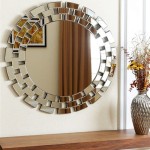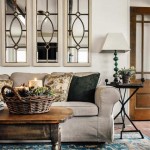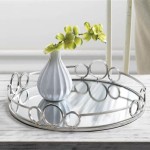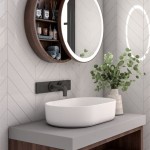Leaded Glass Mirrors
Leaded glass mirrors offer a unique blend of functionality and artistry. They serve the practical purpose of reflection while simultaneously adding a decorative element to any space. Unlike standard mirrors with simple frames, leaded glass mirrors incorporate intricate designs crafted from individual pieces of glass held together by lead cames. This construction method allows for a wide variety of patterns and styles, making each piece a potential work of art.
History and Origins
The technique of joining glass pieces with lead cames dates back centuries, originating in the medieval period for creating stained glass windows in cathedrals and churches. This method was later adapted for other applications, including mirrors. During the Arts and Crafts movement in the late 19th and early 20th centuries, leaded glass experienced a resurgence in popularity, with designers like Louis Comfort Tiffany incorporating it into lamps, windows, and mirrors. This era saw a renewed appreciation for handcrafted items and intricate designs, contributing to the enduring appeal of leaded glass mirrors.
Design and Styles
Leaded glass mirrors offer a diverse range of design possibilities. Geometric patterns, floral motifs, and Art Nouveau-inspired designs are common themes. The choice of glass itself further enhances the aesthetic. Clear, textured, or colored glass can be used to create different effects. Beveled glass, with its angled edges, adds depth and dimension to the design, catching and reflecting light in unique ways. The color of the lead cames, typically silver or black, also plays a role in the overall appearance of the mirror.
The size and shape of a leaded glass mirror contribute significantly to its style and impact. Small, rectangular mirrors are suitable for hallways or bathrooms, while larger, round or oval mirrors can serve as statement pieces in living rooms or dining areas. Some leaded glass mirrors incorporate decorative elements beyond the traditional patterns. For example, jewels or cabochons might be added to further embellish the design and create points of visual interest.
Construction and Craftsmanship
Creating a leaded glass mirror is a meticulous process that requires skill and precision. The design is first sketched onto a pattern, which serves as a guide for cutting the individual glass pieces. Each piece is carefully cut and shaped, ensuring that it fits precisely within the overall design. The lead cames, thin strips of lead with grooves on either side, are then used to hold the glass pieces together. The came is carefully fitted around each piece of glass, and the joints are soldered together to create a strong and stable structure. Once the entire design is assembled, a putty-like compound is applied to the seams to further secure the glass and prevent rattling. Finally, the mirror is framed and backed with a protective material.
Choosing and Caring for a Leaded Glass Mirror
When selecting a leaded glass mirror, consider the existing décor of the space where it will be placed. The mirror's style and colors should complement the surrounding furniture and accessories. The size and shape of the mirror should be proportionate to the wall space and the surrounding elements. For example, a large, ornate mirror might overwhelm a small room, while a small, simple mirror might get lost in a large space.
Maintaining the beauty of a leaded glass mirror requires proper care. Dusting with a soft cloth is generally sufficient for regular cleaning. Avoid using harsh chemicals or abrasive cleaners, as these can damage the delicate glass and lead cames. If the mirror becomes particularly dirty, a mild solution of water and dish soap can be used, but ensure the mirror is thoroughly dried afterwards. Protecting the mirror from excessive moisture and extreme temperatures will also help preserve its integrity.
Placement and Impact
The placement of a leaded glass mirror can significantly impact a room's atmosphere. Strategically positioning the mirror can enhance natural light and create an illusion of spaciousness, especially in smaller rooms. Placing a leaded glass mirror opposite a window can reflect the outdoor view, bringing a sense of the outdoors inside. In dimly lit areas, a strategically placed mirror can reflect artificial light, brightening the space and creating a more welcoming ambiance. Aside from functionality, leaded glass mirrors can serve as focal points, adding a touch of elegance and artistry to any room.
Value and Investment
Leaded glass mirrors represent not just decorative objects, but often investments in craftsmanship and artistry. Handcrafted leaded glass mirrors, particularly antique or vintage pieces, can hold significant value. The quality of the materials, the intricacy of the design, and the condition of the mirror all contribute to its worth. While mass-produced leaded glass mirrors are more readily available and often more affordable, they may lack the unique character and craftsmanship of handcrafted pieces. When considering a leaded glass mirror, it’s important to balance aesthetic appeal with budget and desired level of craftsmanship.
Eighteenth Century Agrarian Business Diy A Mirror From Leaded Glass Window

Tips For Using Mirrors In Copper Foiled Stained Glass

Loading Stained Glass Mirror Panels Faux

Peaches Art Deco Style Leadlight Stained Glass Mirror Felt

Hand Made Blue Leaded Stained Glass Mirror

Stained Glass Mirror Art Deco The Edge

Large Leaded Stained Glass Arched Mirror At 1stdibs

Vintage Cerused Oak Frame Leaded Glass Mirror

Gothic Style Leaded Glass Mirror In Blue Black Cat

How To Make A Mercury Effect Vintage Leaded Glass Window Diy Antique Mirror








